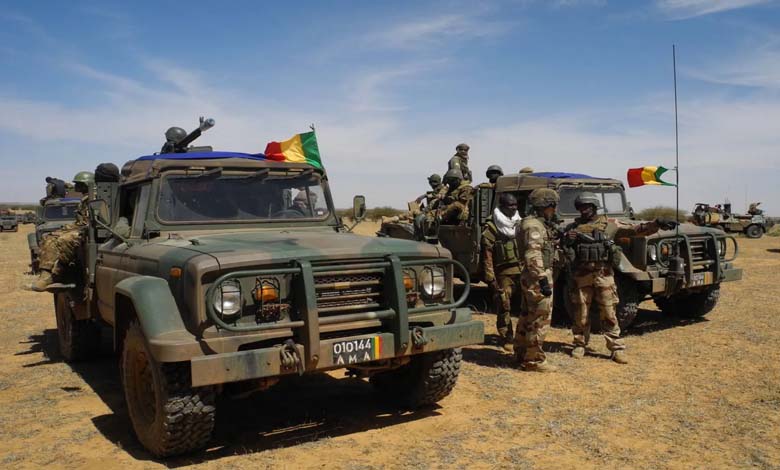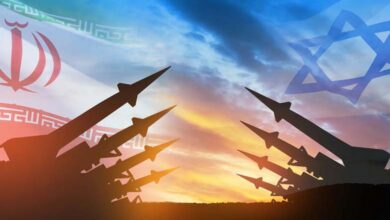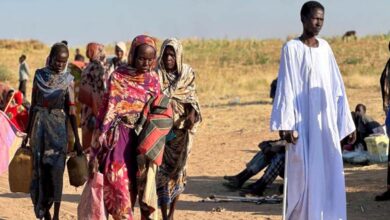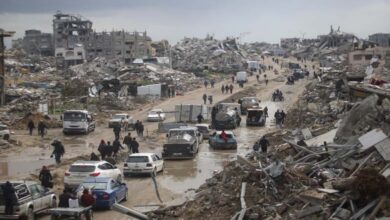Mali Between Fuel Crisis and Expanding Terrorism: Is Al-Qaeda Approaching the Gates of Bamako?

The situation in Mali grows more complicated by the day due to the spread of terrorist groups, according to political experts. But is Bamako truly at risk?
Analysts argue that the reality in Mali is far more complex than the simplified image often portrayed in international media, despite increasingly alarming language — notably in a Wall Street Journal report titled “Al-Qaeda on the Verge of Controlling a State.”
-
Caught in the web of nostalgia and fear: Al-Qaeda traps foreigners in Mali
-
Terrorism Under the Hammer of Allies in Somalia
Since last September, the al-Qaeda-linked Group for the Support of Islam and Muslims (JNIM) has announced a blockade on fuel supplies headed to Bamako, in retaliation for government decisions banning rural fuel sales to limit militants’ mobility and logistics.
Since then, the roads leading to the capital have become conflict zones. The group has targeted fuel trucks traveling between Dakar and Abidjan, setting dozens ablaze and triggering a severe nationwide fuel shortage.
The result: empty gas stations, long queues, and nearly paralyzed cities — scenes that prompted Western governments, including those of the United States, Italy, the United Kingdom, and Germany, to urge their citizens to leave Mali immediately.
-
Killing of Financial Leaders: A Major Blow to Al-Shabaab’s Funding Network in Somalia
-
Washington urges citizens to leave Mali amid escalating jihadist attacks
Is Bamako on the Brink of Falling?
Dr. Bruno Charbonnier, a terrorism expert specializing in Sahel and Franco-African relations at the French Institute of International and Strategic Relations, said: “The Malian capital is encircled, but it is not in danger of falling. What’s happening is not a military campaign to seize Bamako but an indirect strategy aimed at economically and socially exhausting the regime.”
He noted that terrorist groups do not need tanks to exert political pressure — cutting off fuel supplies is enough to paralyze the country. According to him, the military capability required to storm a city of 3.5 million inhabitants, hosting Mali’s largest army base, is far beyond JNIM’s capacity.
-
Nioro under financial siege: Al-Qaeda’s expansion in Mali
-
Terrorism in the Sahel: Mali Accuses Ukraine and Warns the West
The Erosion of the State is a Greater Threat than the Fall of the Capital
Dr. Tristan Fortier, a researcher in Sahel and West African security, agrees that while the situation is serious, the real battle is not for the cities.
He explained: “The jihadists’ primary objective is not to seize capitals but to hollow out the state from within — forcing rural areas to sign submission agreements, imposing zakat, closing schools, controlling women’s clothing, and keeping the army out of villages.”
“If this rural dominance expands,” he added, “the state could end up existing only on paper — present in Bamako but absent elsewhere, as the rest of the country fractures into zones of influence.”
-
Mali in an Existential Test: Al-Qaeda’s Expansion and Mounting Challenges
-
Mali accuses Algeria of supporting “international terrorism”: diplomatic showdown at the UN
He warned that the economic blockade on Bamako is more of a political test than a military one — designed to turn the population against the government.
Local Experts: Al-Qaeda Can’t Take Bamako, But It Can Topple the Government
Dr. Aboubakar Haidara, a Malian researcher at the University of Bamako specializing in terrorist movements, stressed that the situation on the ground is far from the narrative of a “capital takeover.”
-
Suspension of Cooperation and Expulsion of Diplomats: A New Crisis Between France and Mali
-
U.S. Sanctions on Jibril Ibrahim and the al-Baraa ibn Malik Corps: Messages Beyond Sudan
“The group lacks tanks, missiles, or aircraft,” he said. “They operate in small, mobile groups of fighters. Taking Bamako would require thousands of men and continuous supplies — conditions they simply don’t have.”
“The real danger,” he added, “is not an invasion of the capital but internal collapse. If the blockade persists and living conditions deteriorate, sectors of the population could turn against the government. Al-Qaeda is betting on social anger, not military strength.”
He also noted that the Malian army is now far stronger than it was in 2012, after years of conflict and significant military cooperation with Russia, as well as new ground and air weaponry.
-
Among them senior leaders… 60 terrorists killed in clashes with the Somali army
-
Mali Takes Algeria to the International Court of Justice Over Drone Incident
Why Do Terrorist Groups Dominate Rural Areas So Easily?
According to Jeune Afrique, despite alarming headlines about “Bamako under siege,” the situation on the ground is more nuanced. Mali’s vast territory — over 1.24 million square kilometers — makes total military control nearly impossible.
Even with increased troop numbers and training, the army cannot cover the entire country, especially the remote rural zones that serve as the terrorists’ preferred battlegrounds.
In these remote areas, jihadists rarely engage in direct confrontations. Their strategy relies on small, fast, and invisible cells: strike and vanish. A few dozen fighters can close a road, attack a convoy, or impose a suffocating siege on a village.
When civilians can no longer resist, the group proposes a “local agreement” — granting the village protection in exchange for submission. In this way, the map of control expands not through traditional military conquest, but through forced compliance and governance from the shadows.
-
Siege, hostages and threats: Al-Qaeda tightens its grip on Mali
-
High-Impact Operations Shake Terrorist Strongholds in Somalia: Field Victories and International Support
-
Maliṭ: The Bombing That Exposed the Core of the Islamist Project












